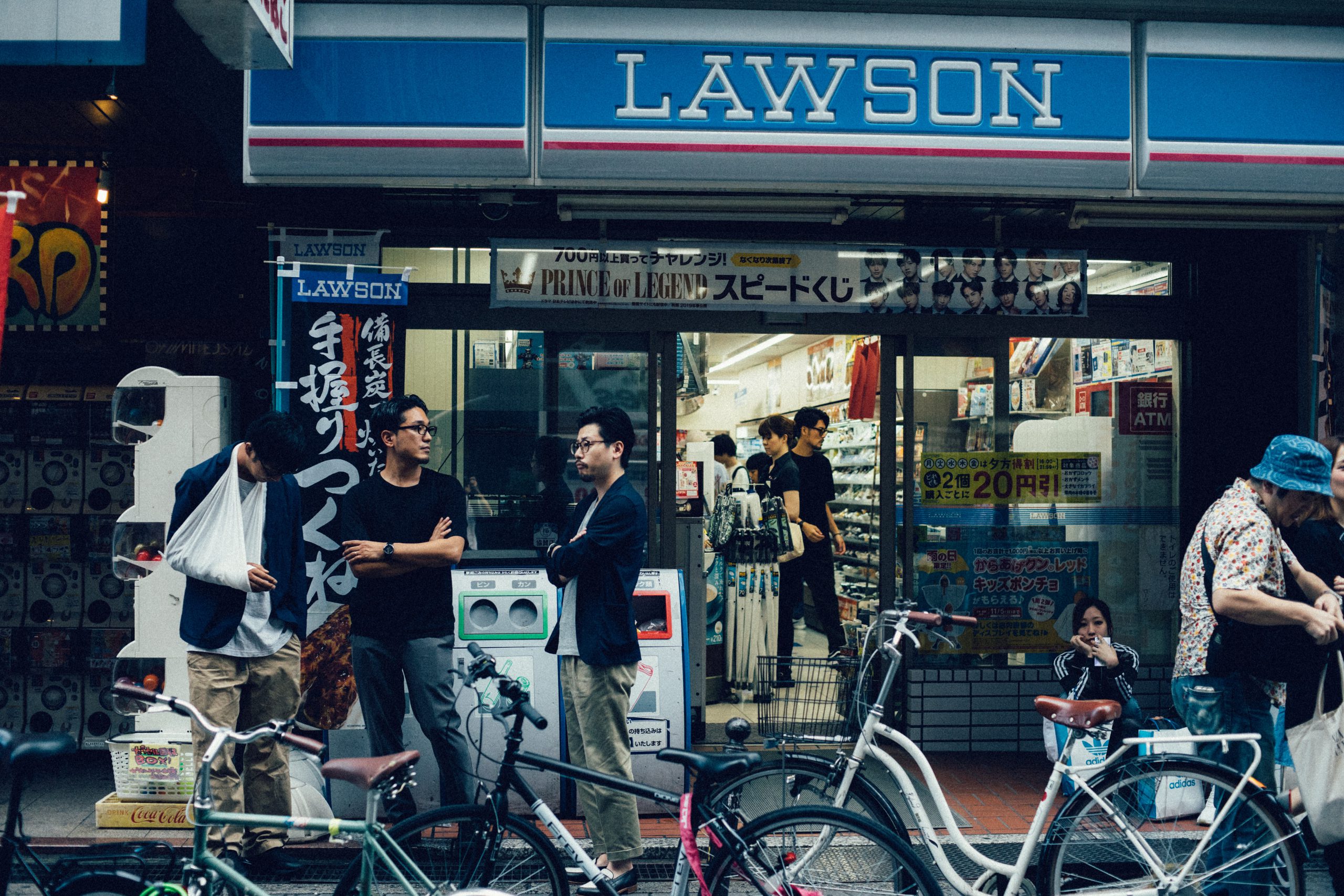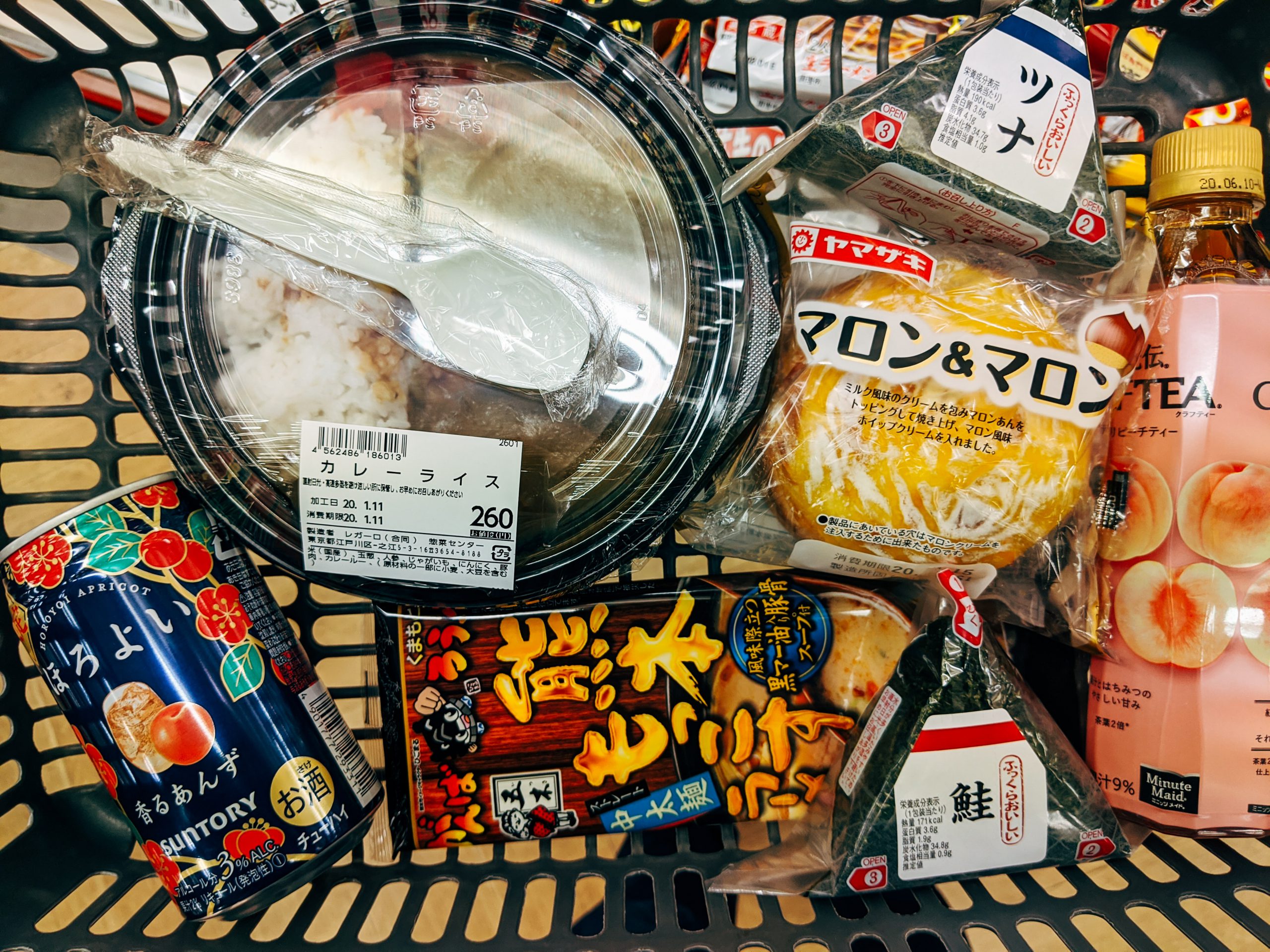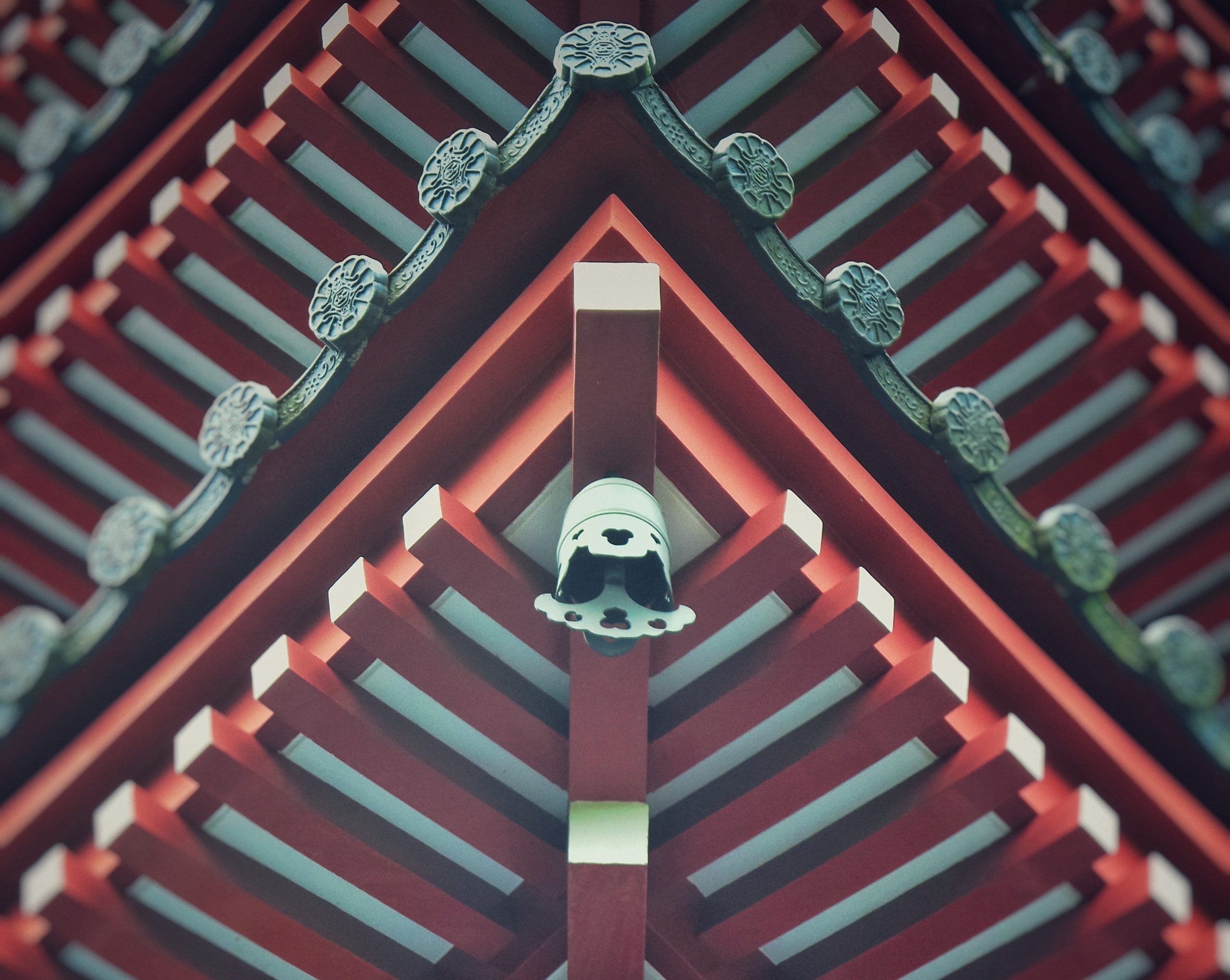Sometimes, you would hear people enthusiastically talk about how good and fun the convenience stores, aka Konbini (the shortened word for a convenience store in Japanese), are when they come back from their Japan trip. (Read this article to understand why Japanese konbini is the best; The Ultimate Guide to the Japanese ‘Konbini’)
7-eleven, Lawson, and Family Mart are the three major konbini in Japan, and each of them offers classic snacks that have been loved by Japanese for decades. In this article, we introduce 13 konbini snacks you should try in Japan!
Savory crunches
Besides senbei (round and flat rice crackers) and regular potato chips, Jagariko always appears in the list of the most popular salty snacks among Japanese people. Jagariko is crunchy, stick shaped potato chips in a cup. Jagariko comes in a wide range of flavors like cheese, buttered potatoes, soy sauce, and buttered cod roe. The most standard flavor is ‘salad’, which contains tiny pieces of carrots and parsley but the flavor is simply salt.
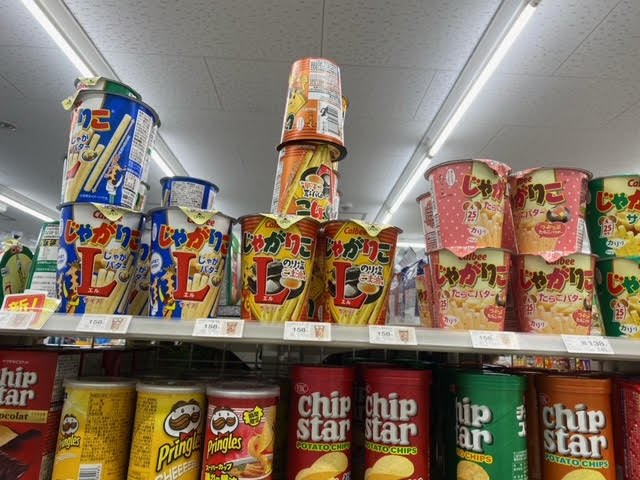
Umaibo is another Japanese classic snack. It is a cylindrical snack which is light and crunchy. Now Umaibo comes in as many as 20 flavors. The most popular flavors among Japanese are corn soup, spicy cod roe, and cheese. These might sound strange that they choose these flavors for a snack, but this is a real Japanese experience for you. Surprisingly, the price of one piece of Umaibo is 10 yen, which hasn’t been changed since its appearance in 1979.
Chocolate delight
Meiji’s chocolates shaped like mushrooms and bamboo shoots are two of the most famous chocolate snacks in Japan. Chocolate mushrooms are called Kinoko no yama meaning mushroom mountain, and bamboo shoots are called Takenoko no sato meaning bamboo shoot village. Since their appearance in 1975 for Kinoko no yama and in 1979 for Takenoko no sato, they have been very popular in Japan because of their cute appearances as well as tastes. There often happens the competition between them, and they even have a popularity vote once a year. It’s better to get them both and decide your side before someone would ask which one is your favorite!
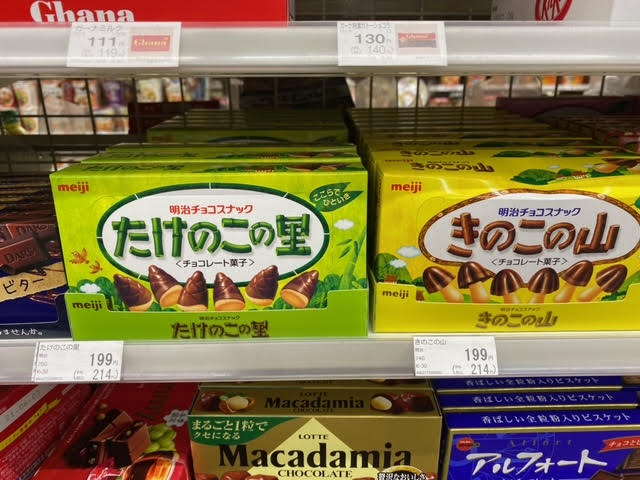
When it was born in 1966 from Glico, Pocky was the first stick shaped chocolate biscuit snack in Japan. Now Pocky is known worldwide and sold in more than 30 countries. In Japan, in addition to standard milk chocolate flavor, strawberry pocky is also popular. Fun fact is, November 11th is Pocky Day, since 11.11 looks like Pocky lining up. On that day. Pocky will likely be sold out at convenience stores since it’s been a trend to have Pocky to celebrate the day in Japan!
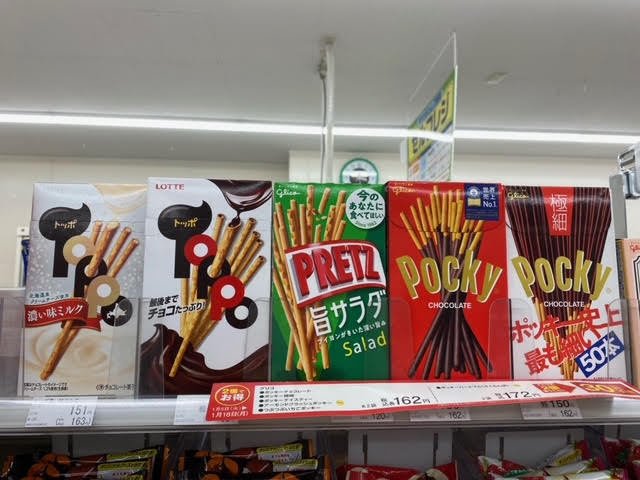
Toppo is another stick shaped chocolate biscuits made by Lotte. Toppo is known as “reverse pocky” consisting of hollowed biscuit sticks filled with chocolate.
Cranky Chocolate consists of chocolate and rice puffs. In addition to classic milk chocolate bars, bite size milk chocolate balls, and strawberry chocolate balls are also available.
Heavenly desserts
Major Japanese convenience stores constantly produce their original desserts, and they can be seasonal. Spring offers a variety of sweets with cherry blossom flavors, and in summer, a larger lineup of frozen sweets are available. People love chestnut, pumpkin, and sweet potato desserts in autumn, and selection of chocolate and mochi (sticky rice cake) sweets are wider in winter than other seasons. Throughout the year, cheese tarts and rolled cakes are popular.
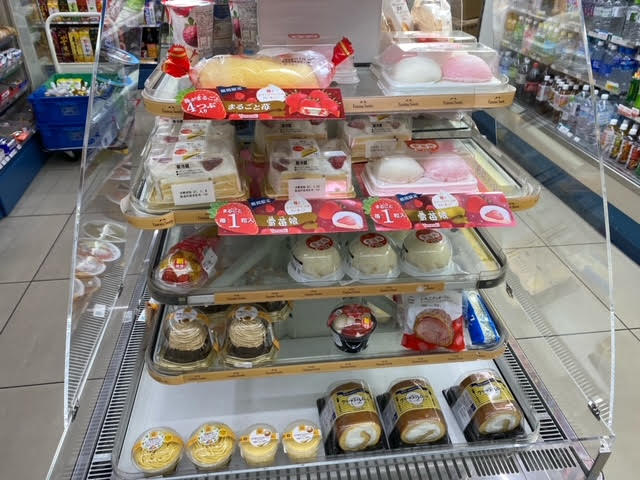
Dorayaki is Japanese classic treat which consists of sweet red-bean filling sandwiched between palm-size pancakes. If you have ever watched Japanese anime “Doraemon”, you might be familiar with Dorayaki because it is Doraemon’s favorite snack. In Japanese convenience stores, you can find classic Dorayaki with simple red-bean filling along with modern versions with whipped cream, pumpkin cream, and mochi, chestnuts, and/or cheeses.
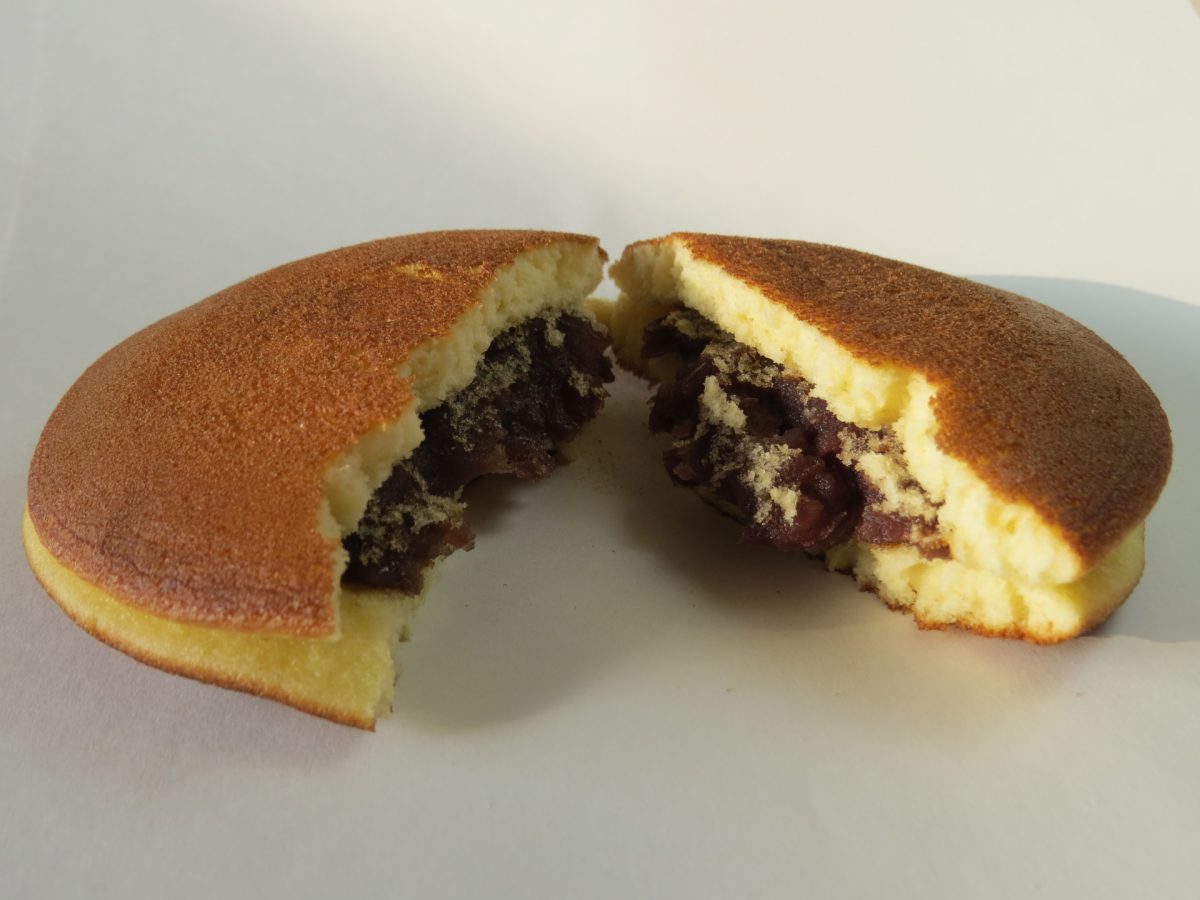
Melonpan is another popular Japanese treat. Literally means “melon bread”, Melonpan can be found in the bakery section in konbini. Melonpan is a sweet bun covered with a thin layer of crisp cookie dough. The appearance can resemble a melon with grid line pattern on top, but there are some Melonpan with smooth surface. Melonpan is loved by all the generations, and each major konbini creates its own Melonpan. Some are crunchy, others are soft. Because they cost only around 100 yen, you can try them all and find your favorite.
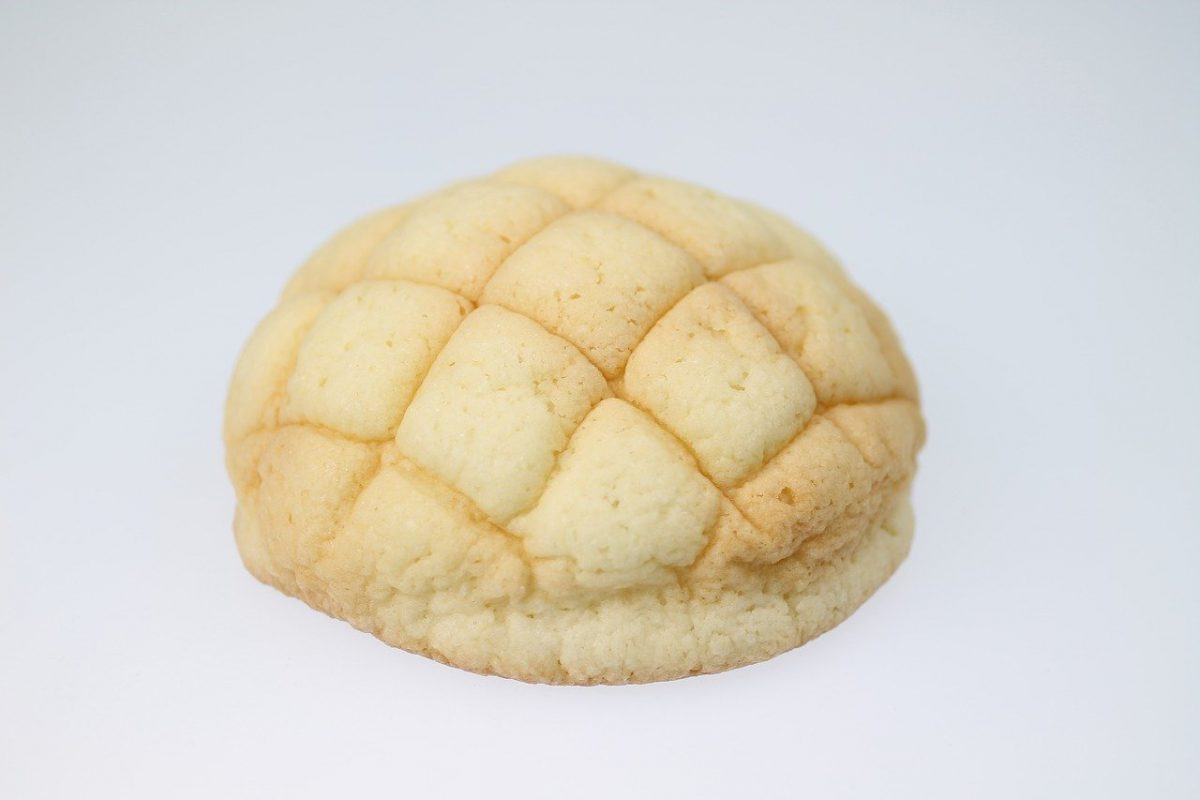
Light Meals You Should Try
When in Japan, you should definitely try rice balls known as onigiri, which have been loved by Japanese since ancient times. Onigiri are popular because they are portable, easy to eat, they do not require utensils for eating, tasty, and come in a variety of fillings. Most of onigiri are wrapped in a sheet of nori (seaweed). Classic fillings are sake (salmon), ume (pickled plum), konbu (kelp), and tuna salad. Nowadays more varieties such as yakiniku (grilled beef), karaage (fried chicken), and shrimp tempura are popular as well.
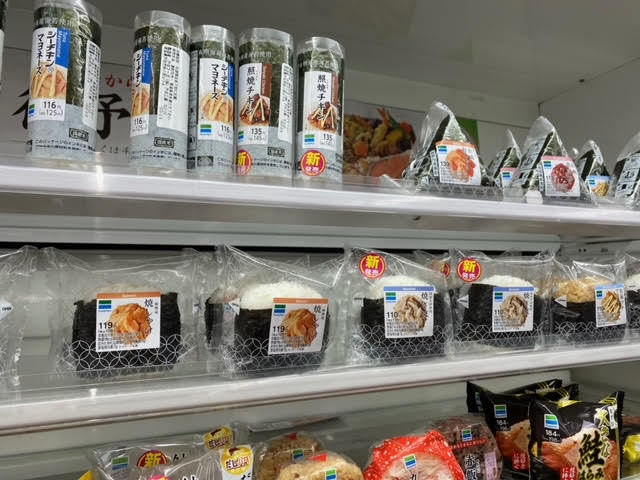
Another light meal option at konbini is instant ramen. A large lineup of instant ramen can be found in konbini. Instant ramen was born in Japan in 1958, and has been popular in Japan and around the world. In konbini, you can find classic flavors like shoyu ramen (soy sauce), shio ramen (salt broth), and miso ramen (miso paste). And sometimes you can find some unique flavors such as curry and ramen collaborated with famous ramen restaurants in Japan. You will be surprised how instant ramen can be varied with a lot of different flavors, and these taste nothing similar to the instant ramens in the other countries.
On a cold winter day, Japanese people love to have warm oden at konbini. Oden is a kind of hotpot dish consisting of various ingredients simmered in a soy-flavored light broth. Normally at konbini you can find oden in food stalls by registers, and you can take whatever ingredients you want from the food stall or you ask clerks what ingredients you want so that they will take them for you. Popular ingredients include daikon (radish), tamago (boiled eggs), konnyaku (konjac), and different kinds of nerimono (fish paste products). When it is cold outside, we recommend you to warm up with this Japanese comfort food.
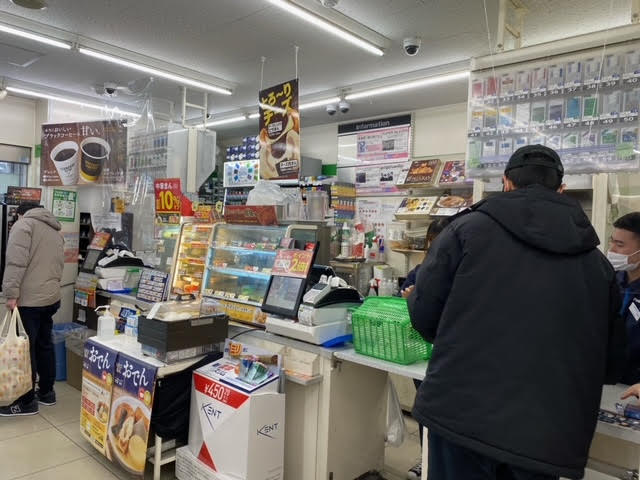
Karaage is fried chicken in Japanese. Fried chicken can be found around the world, but Japanese karaage is usually marinated in soy-sauce and fried. Major Japanese konbini make their original karaage, cook in each store, and sell them at the hot snack corner at the register. Famichiki from Family Mart and Karaage-kun from Lawson are two popular karaage snacks. Famichiki is palm-size, crunchy outside and juicy inside. Karaage-kun is bite-size, soft inside and outside, and comes in several flavors including original soy-based, cheese, lemon, and pepper & mayonnaise.
There are so many different kinds of treats available in Japanese convenience stores. The things we listed above are just a few of them. Let us know your favorite konbini snacks in the comments!
Follow us on Instagram, Facebook and Twitter for more travel inspiration. Or tag us to get featured!
Happy travelling!
Other articles you might like
